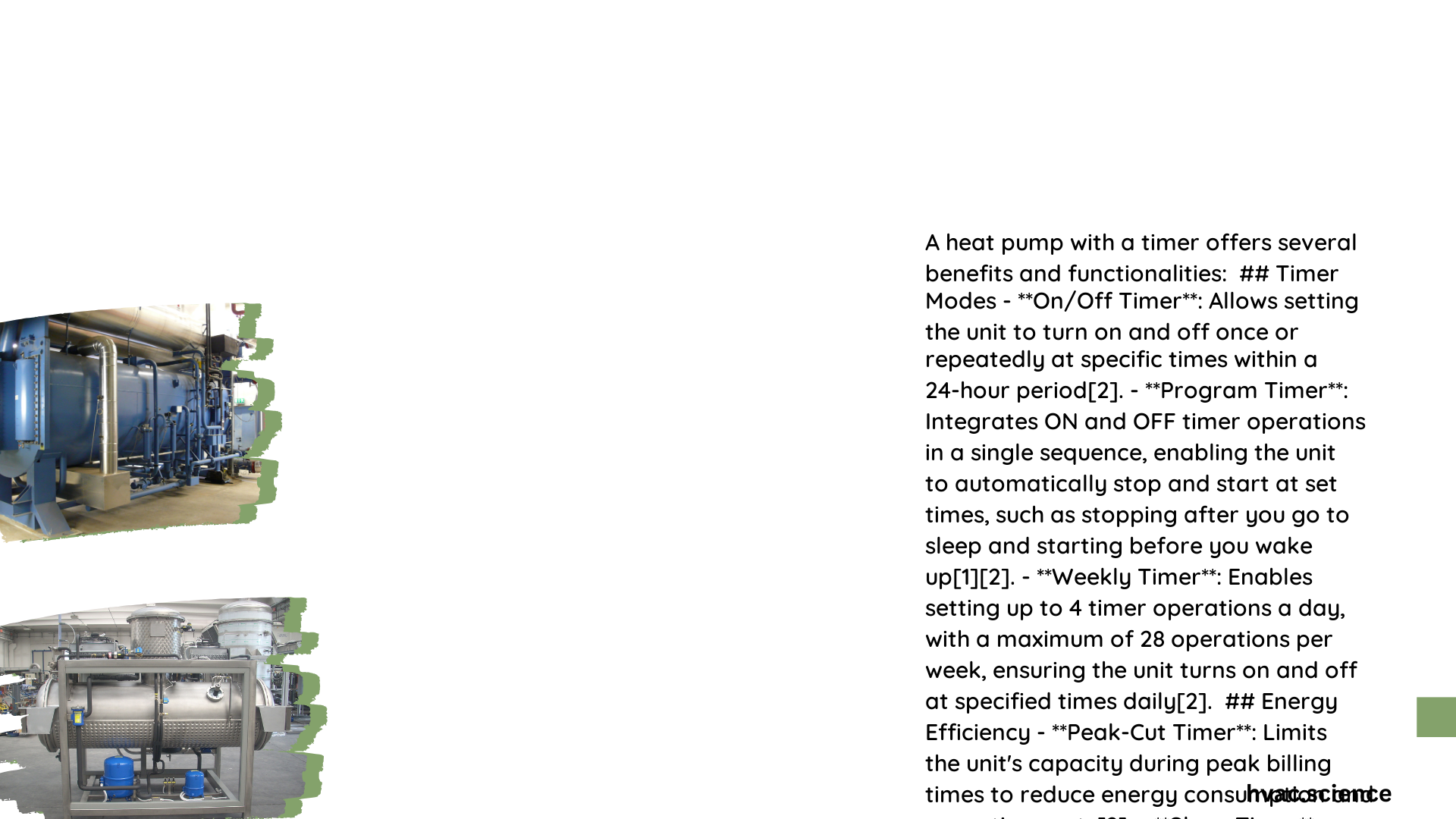Heat pumps with timers represent a revolutionary approach to home temperature management, offering precise control and significant energy savings. By intelligently scheduling temperature adjustments based on occupancy and daily routines, homeowners can achieve optimal comfort while minimizing electricity consumption. This comprehensive guide explores the intricate world of heat pump timer technology, providing expert insights into installation, programming, and maximizing system performance.
What Makes a Heat Pump Timer Essential?
Heat pump timers transform traditional heating and cooling systems into smart, responsive solutions. Unlike standard HVAC equipment, these advanced systems allow granular temperature control that adapts to your lifestyle.
Key Benefits of Heat Pump Timer Technology
| Feature | Energy Impact | Comfort Level |
|---|---|---|
| Programmable Scheduling | Up to 10% Bill Reduction | High Customization |
| Occupancy-Based Control | Reduced Unnecessary Runtime | Consistent Comfort |
| Smart Temperature Adjustment | Lower Carbon Footprint | Personalized Settings |
How Do Heat Pump Timers Work?

Heat pump timers operate through sophisticated microprocessors that monitor and adjust temperature settings automatically. These devices consider multiple factors:
- Occupancy Patterns: Detect when residents are home or away
- Time of Day: Adjust temperatures during sleep or work hours
- External Temperature: Optimize heating/cooling efficiency
Recommended Timer Settings
- Daytime Occupied Mode
- Summer: 22-25°C (72-77°F)
-
Winter: 20-22°C (68-72°F)
-
Nighttime/Unoccupied Mode
- Summer: Increase temperature by 3-5°C
- Winter: Decrease temperature by 2-4°C
What Should You Consider Before Installation?
Compatibility Checklist
- Verify heat pump system specifications
- Check electrical requirements
- Assess home insulation quality
- Determine smart home integration potential
How to Select the Right Heat Pump Timer?
Evaluation Criteria
- Programmability: Multiple scheduling options
- User Interface: Intuitive controls
- Connectivity: Wi-Fi/Smart Home compatibility
- Price Range: $50-$250
- Energy Star Certification
What Are Common Installation Challenges?
Potential Obstacles
- Incorrect wiring configurations
- Incompatible thermostat models
- Complex programming interfaces
- Limited technical knowledge
Maintenance and Optimization Tips
- Annual professional inspection
- Regular filter cleaning
- Update firmware periodically
- Monitor energy consumption trends
- Calibrate sensors annually
Advanced Timer Features to Explore
- Geofencing technology
- Machine learning temperature adaptation
- Remote smartphone control
- Energy consumption reporting
- Integration with smart home ecosystems
Cost-Benefit Analysis
Potential Annual Savings
| Investment | Estimated Savings | Payback Period |
|---|---|---|
| $150 Timer | $180-$250 | 8-12 Months |
| $250 Smart Timer | $250-$350 | 10-14 Months |
Professional Recommendations
Experts consistently recommend investing in heat pump timers with:
– Precise scheduling capabilities
– User-friendly interfaces
– Comprehensive energy reporting
– Robust compatibility features
Technical Considerations
Electrical Requirements
- 24V AC power supply
- C-wire compatibility
- Surge protection
- Low voltage tolerance
Final Thoughts
Heat pump timers represent a sophisticated solution for modern home climate management. By combining intelligent technology with user-centric design, these devices offer unprecedented control over energy consumption and personal comfort.
Pro Tips
- Start with basic programming
- Gradually customize settings
- Monitor performance consistently
- Consider professional installation for complex systems
